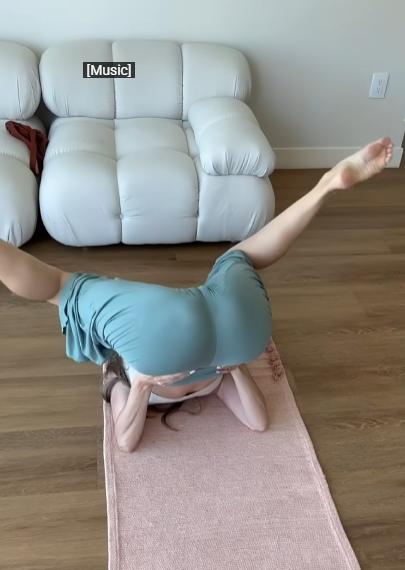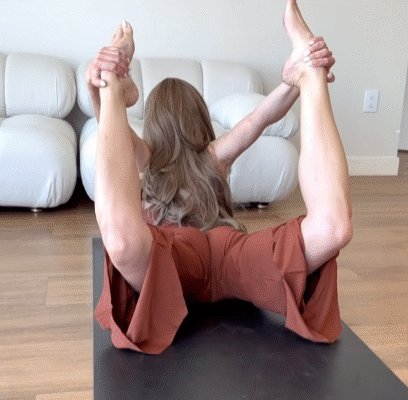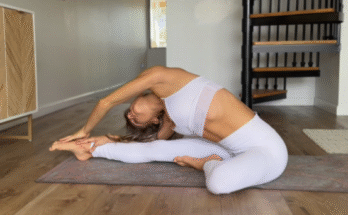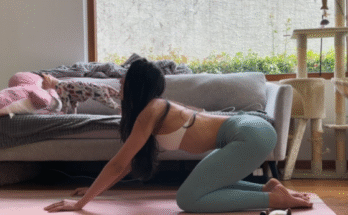
Stretching is an essential part of any fitness or wellness routine, and among the many stretches, the deep quad stretch holds a special place. The quadriceps, often referred to as the “quads,” are the large muscles on the front of your thighs. They play a crucial role in walking, running, jumping, and squatting. Because of their central role in mobility, flexibility in the quads is vital for athletic performance, injury prevention, and overall comfort in daily movement. A deep quad stretch is not just about loosening tight muscles—it can improve circulation, enhance posture, and increase range of motion.
Understanding the Quadriceps
The quadriceps group is composed of four muscles: the rectus femoris, vastus lateralis, vastus medialis, and vastus intermedius. Together, these muscles extend the knee and stabilize the patella (kneecap). Tight quads are a common problem, especially for people who sit for long periods or engage in high-impact sports like running, cycling, and soccer. Overly tight quads can contribute to lower back pain, knee discomfort, and even hip mobility issues.
A deep quad stretch targets these muscles directly, encouraging them to lengthen and release tension. Unlike superficial stretching, which only affects the outer layers of the muscle, deep quad stretching works to relax the muscle fibers fully and release any tightness from extended periods of inactivity or repetitive strain.
Benefits of Deep Quad Stretching
Incorporating deep quad stretches into your routine offers multiple benefits:
- Improved Flexibility and Range of Motion: Regular deep quad stretches allow your knees and hips to move more freely, reducing stiffness and improving functional movement.
- Reduced Muscle Tension: Stretching helps release tightness in the quadriceps, which can alleviate discomfort in the knees and lower back.
- Enhanced Athletic Performance: Flexible quads support better movement patterns, quicker sprints, more powerful jumps, and smoother squats or lunges.
- Injury Prevention: Tight quads are prone to strains and tears. Stretching them deeply strengthens resilience and reduces the risk of injury.
- Better Posture: The quads influence pelvic alignment. Stretching them can correct anterior pelvic tilt caused by prolonged sitting, leading to improved posture.

Preparing for the Deep Quad Stretch
Before diving into a deep quad stretch, it’s important to warm up the body. Cold muscles are less pliable and more prone to injury. Begin with light cardio for 5–10 minutes, such as jogging in place, cycling, or brisk walking. Once your body is warm, you can move into more focused stretching.
Additionally, consider the following tips:
- Use Support if Needed: A wall, chair, or strap can help you maintain balance during the stretch.
- Breathe Deeply: Controlled breathing helps relax the muscles, allowing you to deepen the stretch gradually.
- Avoid Overstretching: Stretch to a point of mild discomfort, not pain. Overstretching can damage muscle fibers and ligaments.
Techniques for Deep Quad Stretch
There are several methods to perform a deep quad stretch. Here are some of the most effective techniques:
1. Standing Quad Stretch
- Stand upright and hold onto a wall or chair for balance.
- Bend your right knee and bring your heel toward your glutes.
- Grab your ankle with your right hand, keeping your knees close together.
- Gently push your hips forward to deepen the stretch in the front of the thigh.
- Hold for 20–40 seconds, then switch legs.
This classic stretch is excellent for targeting the quads while also engaging your core to maintain balance.
2. Lying Side Quad Stretch
- Lie on your side with legs stacked.
- Bend your top knee and bring your heel toward your glutes.
- Hold your ankle with your top hand and gently pull it closer to your body.
- Keep your knees aligned and chest lifted to avoid arching your lower back excessively.
- Hold for 20–40 seconds, then switch sides.
This version reduces the balance requirement and allows for a more controlled stretch.
3. Prone Quad Stretch
- Lie face down on a mat.
- Bend your right knee and reach back with your right hand to grab your ankle.
- Pull your heel gently toward your glutes while keeping your hips pressed into the floor.
- Maintain a neutral spine and engage your glutes slightly to stabilize your pelvis.
- Hold for 20–40 seconds, then switch legs.
This prone variation allows for maximum isolation of the quads and reduces strain on the lower back.
4. Couch Stretch
The couch stretch is a more advanced deep quad stretch that also targets the hip flexors:
- Kneel on one knee with the other foot placed on an elevated surface, like a chair or wall behind you.
- Press your hips forward gently while keeping your chest upright.
- Engage your core to protect your lower back and maintain stability.
- Hold for 30–60 seconds on each side.
This stretch is especially useful for athletes, runners, and individuals with tight hip flexors in addition to quads.

Tips for Maximizing the Stretch
To get the most out of your deep quad stretches, keep the following in mind:
- Consistency is Key: Stretch daily or at least 3–4 times per week for noticeable improvement in flexibility.
- Combine with Strengthening: Strengthening exercises like lunges, squats, and leg presses complement stretching and prevent imbalance.
- Use Props: Yoga straps, resistance bands, or foam rollers can enhance your stretch and support proper alignment.
- Focus on Breathing: Inhale deeply to prepare, exhale slowly as you deepen the stretch. This technique encourages muscle relaxation.
- Warm Down After Exercise: Deep quad stretches are most effective after your muscles are warm, such as post-workout or after a brisk walk.
Common Mistakes to Avoid
While deep quad stretches are highly beneficial, improper form can lead to strain or injury:
- Arching the Lower Back: This puts unnecessary stress on your spine. Engage your core and keep hips neutral.
- Pulling Too Hard: Forceful stretching can tear muscle fibers. Stretch gradually and respect your body’s limits.
- Neglecting Other Muscle Groups: Stretching only the quads can create imbalance. Don’t forget hamstrings, glutes, and hip flexors.
- Holding Breath: Breath-holding increases tension. Breathe steadily and relax during the stretch.

Integrating Deep Quad Stretch Into Your Routine
Deep quad stretches can be incorporated into multiple phases of your routine:
- Pre-Workout: Pair with dynamic stretches to activate quads and hip flexors.
- Post-Workout: Hold stretches longer to promote recovery and prevent stiffness.
- Morning Routine: A brief session in the morning helps wake up muscles and improve circulation.
- Evening Routine: Stretching before bed can relax tight muscles and improve sleep quality.
By including deep quad stretches in your daily regimen, you enhance mobility, reduce the risk of injury, and support overall physical health.
Conclusion
The deep quad stretch is a simple yet powerful tool for improving flexibility, alleviating tension, and enhancing overall physical performance. By understanding the anatomy of your quadriceps, practicing correct form, and incorporating consistent stretching, you can enjoy the full benefits of this essential movement. Whether you are an athlete, a desk worker, or someone seeking general mobility, the deep quad stretch is a reliable addition to your wellness routine. Remember, flexibility is a journey, not a destination. Take your time, breathe deeply, and allow your muscles to open gradually, unlocking greater freedom, strength, and comfort in every step.



